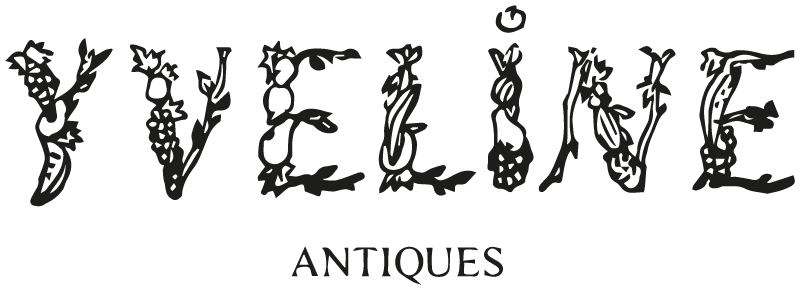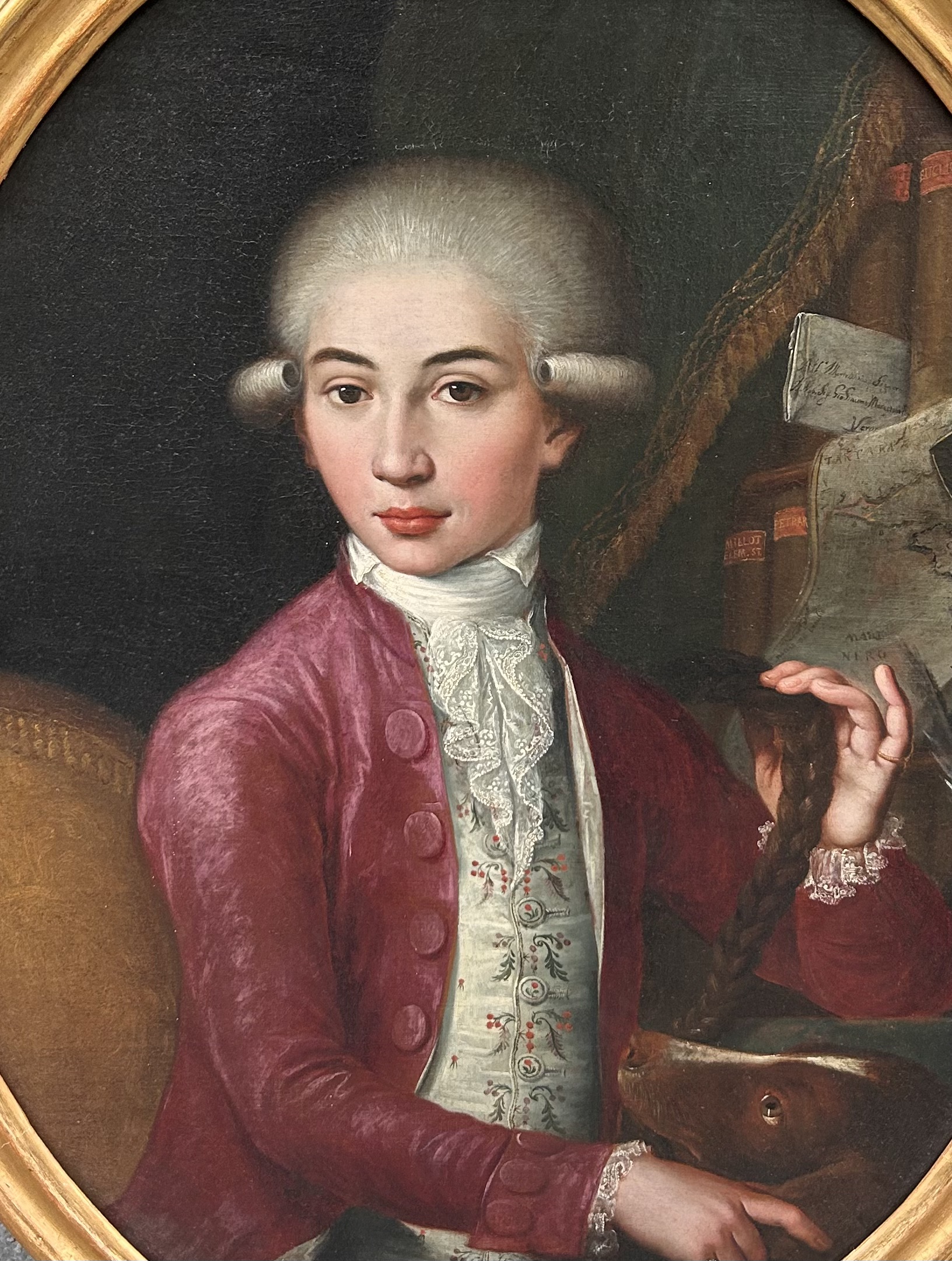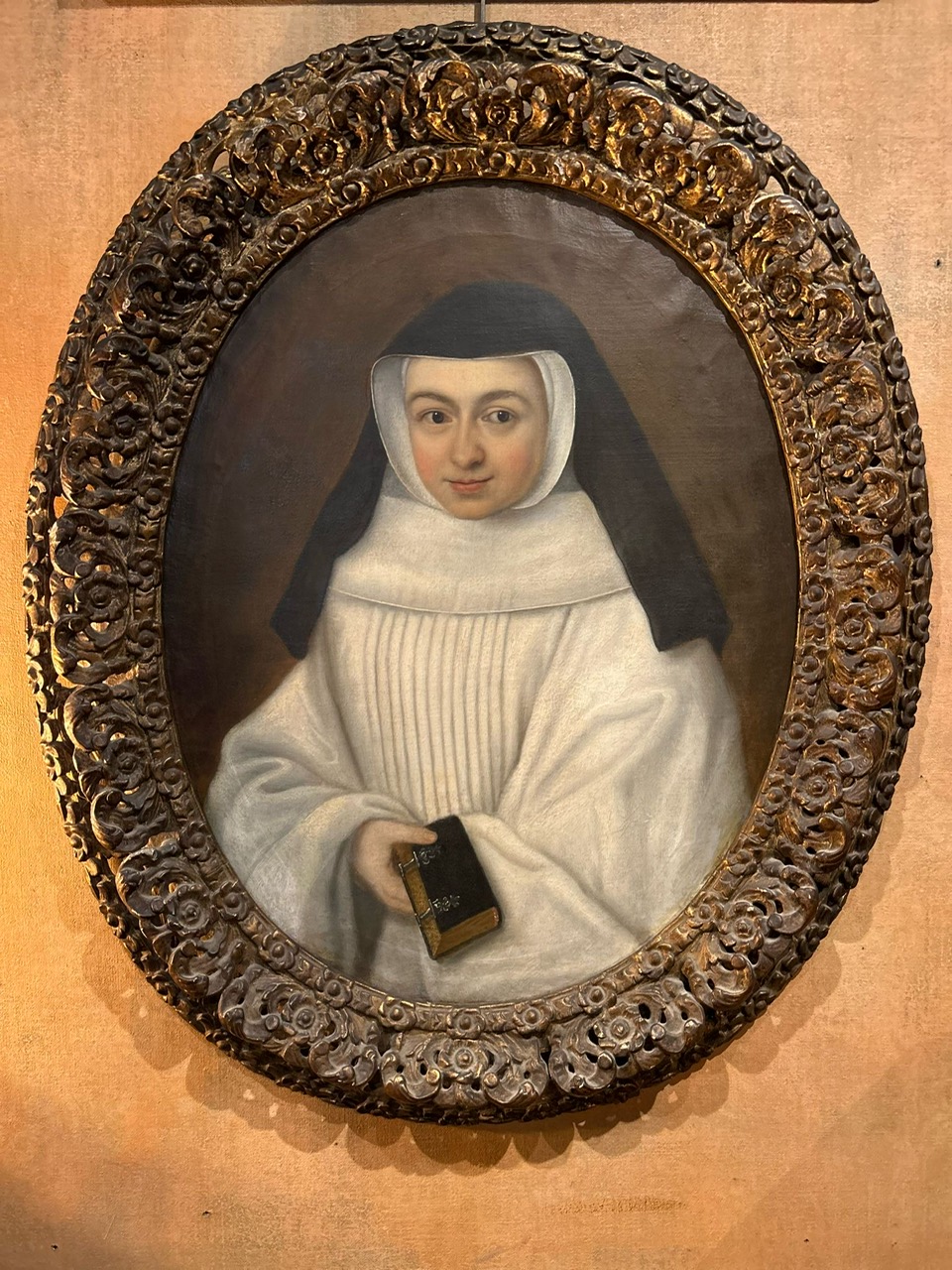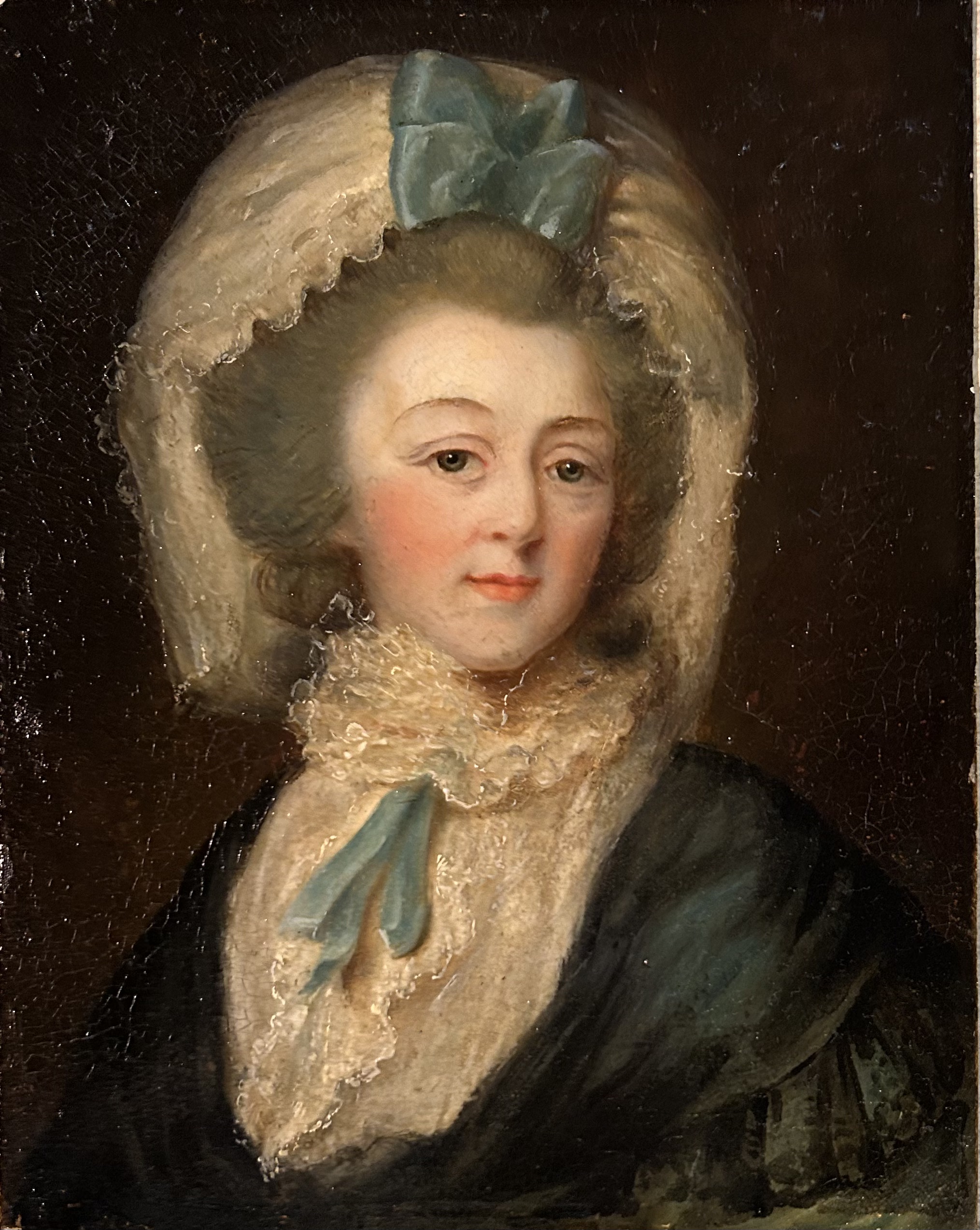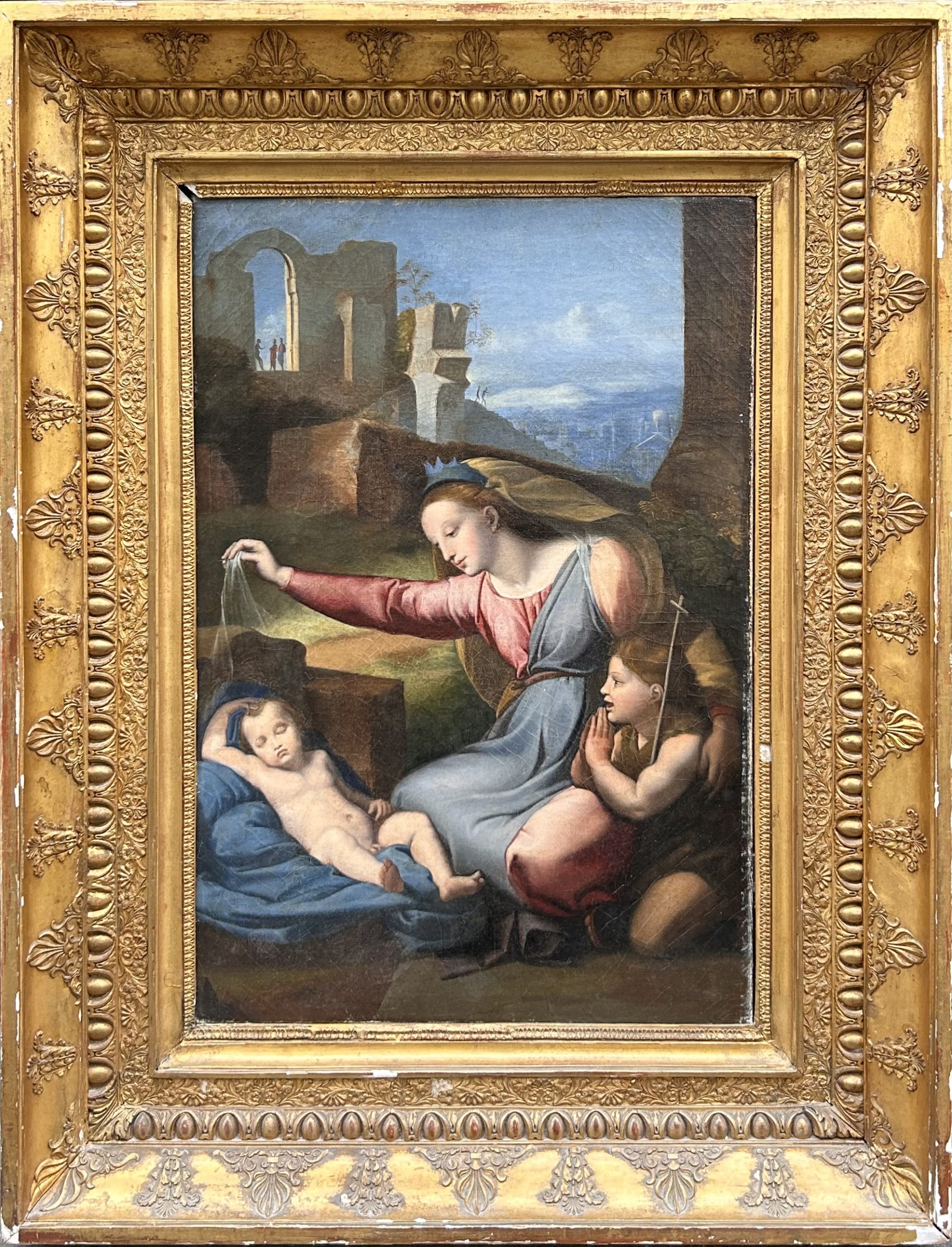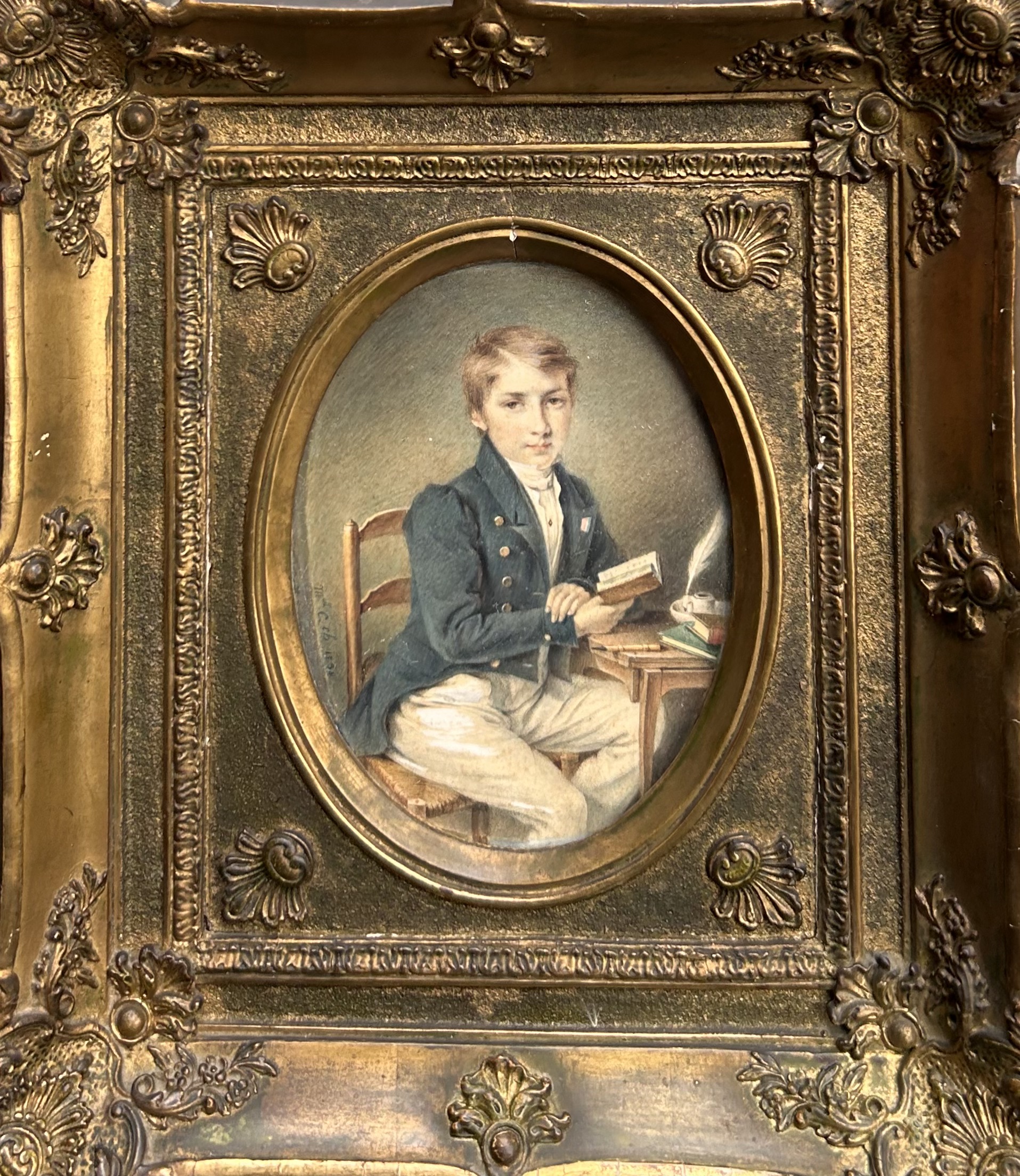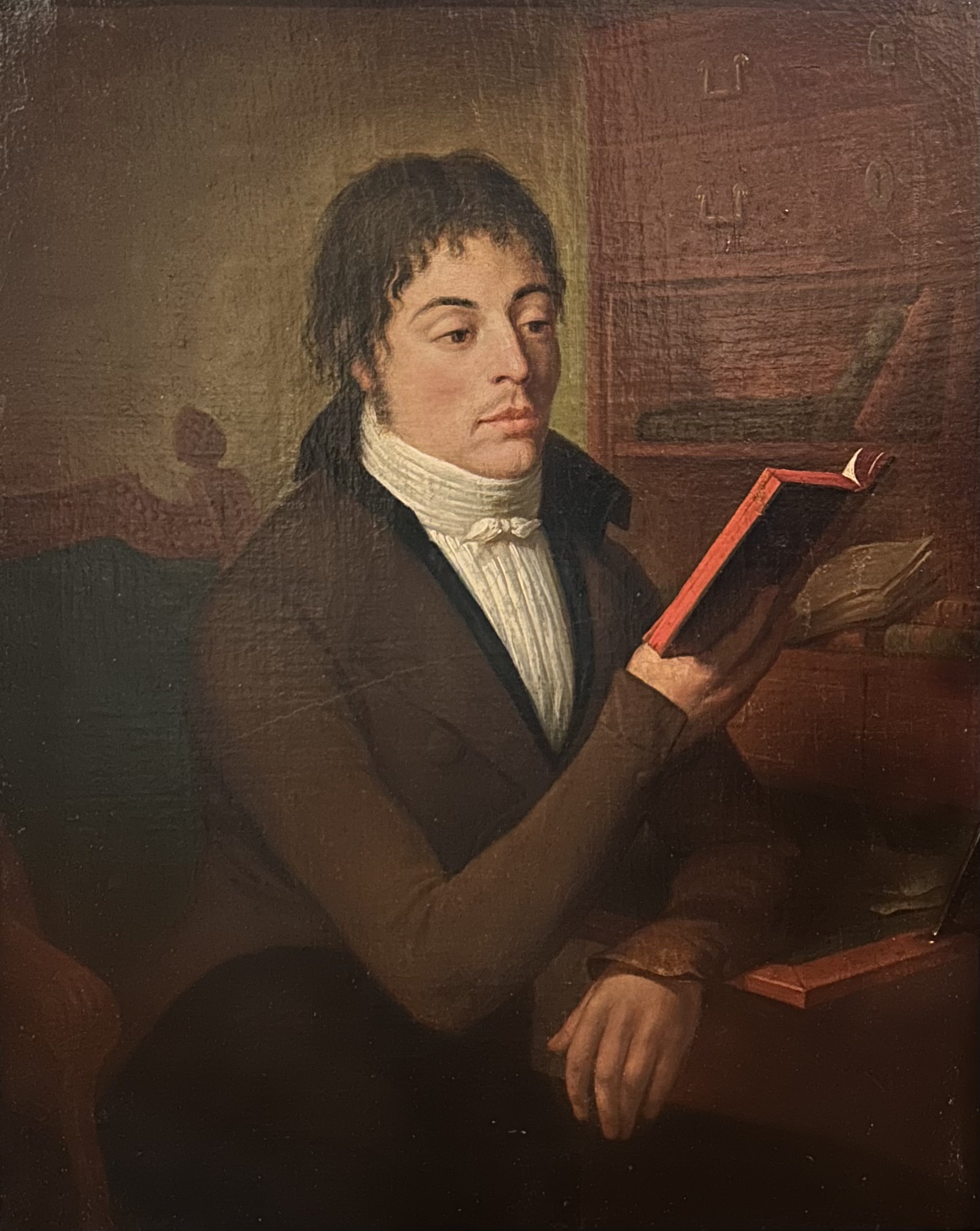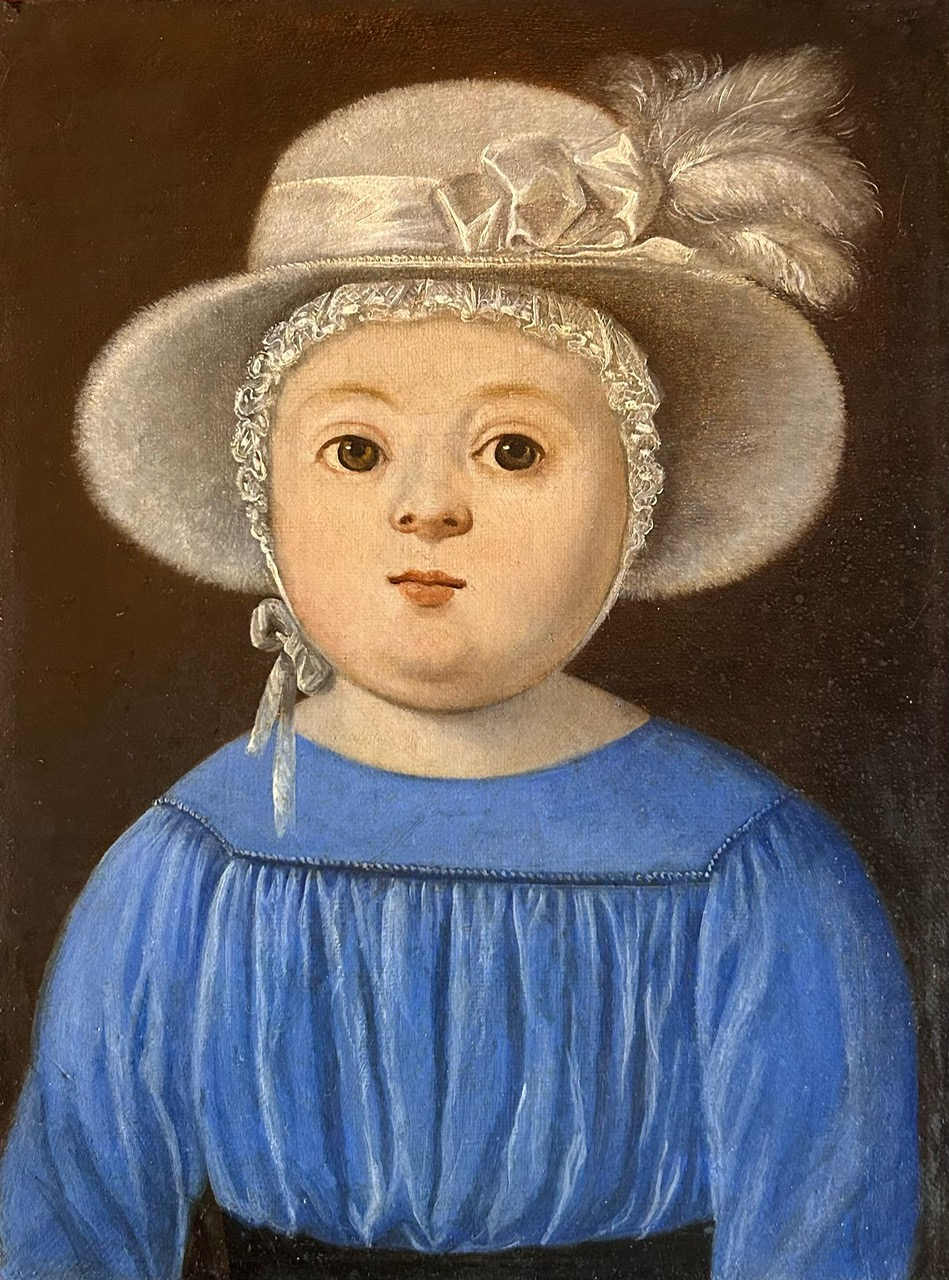Painting fixed under glass is a unique technique because the work is created on the back of the glass. While on a canvas, the composition is sketched in broad strokes, then flat areas of color are applied, gradually finishing with the details, in reverse glass painting, the procedure is reversed. Unlike the normal technique, which involves painting the details (the nose, eyes, flowers) before the background (the face, the landscape), the viewer must view the finished work on the unpainted side of the glass plate.
Portrait of a young diplomat by Agostino Gaetano Ugolini (1755-1824).
Large six-leaf screen in painted canvas, panels decorated with a motif inspired by Chinoiserie, as was fashionable in the mid-18th century, reverse decorated with simple trompe l’oeil panels.
Oil on canvas “Portrait of a nun”, richly carved gilded wood frame.
Flemish school,
18th century
Oil on canvas representing a mastiff and its puppies in an outbuilding, after the original by Christophe Huet (1700-1759) found in the private collection of Count Alarico Palmieri.
19th century
England
Oil painting on zinc “Portrait of a woman with a blue bow”.
18th century
France
The original, kept at the Louvre Museum in Paris, depicts a Virgin Mary wearing a blue diadem, a symbol of purity and heavenly royalty. She holds the Child Jesus with poignant tenderness, while the little Saint John watches with devotion, forming a composition imbued with gentleness and mysticism.
Watercolor on paper “Portrait of Charles Charpentier” auctioneer, son of the painter Jacques Denis Charpentier made by his sister Céleste Charpentier in 1830.
Circa 1830
France
Oil on canvas, portrait of a young man reading in front of a secretary, one arm resting on the flap,
signed by Dominique Doncre lower right and dated 1802.
Oil on canvas, bust portrait of a child in a blue dress and wearing a feathered hat.
19th century
